Ceramics from the Houlezhai Collection sold at Sotheby's Hong Kong, 29 April 2022
Old-World Charm from the Kempe Ceramics Collection
Regina Krahl
This enchanting group of ceramics, formerly in the collection of Dr Carl Kempe, displays an unmistakable old-world collecting flair. Dr Carl Kempe (1884-1967) was a Swedish industrialist, a noted tennis player, who won an Olympic medal, and an avid collector of Chinese art. His collection had two main strands: gold and silver wares and ceramics. The ceramic collection was representing the history of Chinese white wares practically in its entirety, but equally comprised many other types of stoneware and porcelain. It was housed in Kempe’s residence, Ekolsund Castle, a historic building northwest of Stockholm, recorded since the 14th century, that for centuries had served as a royal palace. The collection had largely been formed before the War, a hand-written catalogue had been compiled by Hans Öström already in the 1940s, followed by a printed catalogue written by Bo Gyllensvärd in 1964, when it comprised 900 items. The yellow Kempe labels with their distinctively designed CK logo are unmistakable.
Kempe clearly was not a collector of trophies but an inquisitive mind, whose aim was not only to assemble masterpieces and classics, but equally pieces that still required research. He readily lent to exhibitions, so that pieces from his collection were seen in two of the most important exhibitions of Chinese art of all times, at the Royal Academy of Art in London 1935/6 and at the Palazzo Ducale in Venice 1954; but also several times at the Oriental Ceramic Society in London, of which he was one of the early foreign members; as well as at the Nationalmuseum Stockholm in 1949, the Kunstindustrimuseet Copenhagen in 1950, the Musée Cernuschi Paris in 1956 and elsewhere. Sadly, many pieces included in these early exhibitions can no longer be identified, since the catalogues had few illustrations and only scant descriptions. After Kempe’s death, the collection remained for some time in the family, and a selection toured the United States, starting at Asia House Gallery, New York in 1971. Before eventually being dispersed, it was for some years on display at the East Asian Museum at Ulricehamn, Sweden. The ceramics were sold in 2008 in several highly successful auctions at Sotheby’s in London and Paris, where the prices achieved established a new level of values for Song and earlier stonewares.
Of this famous Kempe collection, these twenty-one white and green wares have remained together as part of a Chinese collection, a small but rather remarkable group that includes two dated vessels (lot 3698 of 977 and lot 3690 of 1089), two items inscribed guan, ‘official’ (lots 3688 and 3692), and several other conspicuous pieces. Noteworthy among the white wares is, for example, the small tripod water vessel with paw feet and lotus décor (lot 3692). It was previously attributed to the Xing kilns of Hebei, and predecessors of similar shape appear to have been made at both the Xing and Ding kilns: one without design, with a more bluish glaze, which leaves the lower part free, was excavated at Dingzhou city, Hebei (Zhongguo gu ciyao daxi. Zhongguo Dingyao/Series of China’s Ancient Porcelain Kiln Sites: Ding Kiln of China, Beijing, 2012, p. 274, fig. 11 bottom); another, also more bluish and plain, excavated in Xi’an, Shaanxi province, has been attributed to the Xing kilns (Zhongguo gu ciyao daxi. Zhongguo Xingyao/Series of China’s Ancient Porcelain Kiln Sites. Xing Kiln of China, Beijing, 2012, p. 375 top). Guan marks, although altogether rare, were also applied at both kiln centres and were remarkably widely distributed, having been found at Tang, Five Dynasties, Liao and Northern Song sites ranging in date from the late 9th to the 11th century. With its fine ivory-toned glaze and delicate lotus design, the present piece is, however, more likely to have been made in the Ding region.
Another Ding piece must be mentioned, the bowl with its charming, crisply moulded decoration of boys frolicking among peonies (lot 3695). Two pieces probably from the same mould are preserved in the National Palace Museum, Taipei (Dingzhou hua ci. Yuan zang Dingyaoxi baici tezhan/Decorated Porcelains of Dingzhou. White Ding wares from the collection of the National Palace Museum, National Palace Museum, Taipei, 2014, nos II-108 and 109), and fragments with very similar motifs were excavated from the Jiancicun site, Dingyao (Zhongguo gu ciyao daxi. Zhongguo Dingyao/Series of China’s Ancient Porcelain Kiln Sites: Ding Kiln of China, Beijing, 2012, p. 289, fig. 62).
One of the earliest green wares in this group is an irresistibly modelled owl vessel, its surface textured by stamping, pricking and incising (lot 3691). It is a rare individually fashioned example from kilns in the Yue region of northern Zhejiang, which otherwise tended to produce in quantity. Gyllensvärd duly featured it in one of the very few large illustrations in his catalogue.
A similarly endearing aspect adheres to another small item, the little vessel with four tubular spouts, whose crackled glaze, however, identifies it as a serious Hangzhou guan product (lot 3703). Variously called a flower or an incense holder, it is in any case a classic Southern Song desk item signalling the exquisite taste of its owner.
Most of the pieces in this group are easy to attribute at our present state of knowledge, so we can correct Gyllensvärd’s misattribution of a celadon bowl to Korea, which would seem to be Chinese (lot 3706). Yet, continuous excavations and the discovery of ever new kiln sites in China raise intriguing new questions. Excavations in Henan province, for example, have brought to light several manufactories – including the imperial Ru kilns of Baofeng – that made wares of Jun type, with blue glazes, with copper-splashed blue glazes and with green glazes, besides the best-known workshops of these wares at Yuntai. What at first glance looks like a classic green Jun bowl in the collection, may well have been made at one of the kiln centres in Ru territory (lot 3699). The Donggou kilns located at Dayu to the east of Ruzhou city, north of Baofeng, yielded not only wares with Jun glazes, but also celadon, white wares, white wares with black painted designs, as well as biscuit-fired pieces and kiln furniture, among them a green-glazed ‘Jun’ bowl of very similar shape as the present piece, but slightly larger (Henan xinchu Song Jin mingyao ciqi tezhan [Special exhibition of porcelains recently excavated from famous Song and Jin kilns in Henan], Poly Art Museum, Beijing, 2009, p. 154 top), and pieces of similar glaze colour and with similar treatment of foot and base, both partially glazed, with a ring on the base wiped nearly free of glaze (Gugong Bowuyuan cang Zhongguo gudai yaozhi biaoben [Specimens from ancient Chinese kiln sites in the collection of the Palace Museum], vol. 1: Henan juan [Henan volume], Beijing, 2005, no. 470). A re-evaluation of his collection in the light of such new discoveries would most likely have pleased its former Swedish owner.
Lot 3688. A Dingyao white-glazed foliate-rim bowl with an inscribed 'guan' mark, Five dynasties (907-960); 13.5 cm. Lot sold 756,000 HKD (Estimate : 200,000 - 300,000 HKD). © Sotheby's 2022
the base with a six-character seal mark in underglaze blue.
Property from the Houlezhai Collection.
Provenance: Bluett & Sons, London (label).
Collection of Dr Carl Kempe (1884-1967), no. CK338.
Sotheby's London, 5th November 2008, lot 452 (part lot).
Literature: Gustaf Lindberg, 'Hsing-Yao and Ting-Yao', The Bulletin of the Museum of Far Eastern Antiquities, no. 25, Stockholm, 1953, pl. 49, fig. 44.
Bo Gyllensvärd, Chinese Ceramics in the Carl Kempe Collection, Stockholm, 1964, pl. 338.
Thomas Dexel, Frühe Keramik in China [Early Ceramic in China], Braunschweig, 1973, pl. 58c.
Margaret Medley, T'ang Pottery and Porcelain, London, 1981, pl. 115.
Note: A similar and larger example, also inscribed with a Guan mark, is preserved in the Taipei Palace Museum, attributed to the 10th century, Five Dynasties - Northern Song dynasty, illustrated in the exhibition catalogue Decorated Porcelains of Dingzhou, Taipei, 2014, cat. no. I-18, where the author mentions bowls of this type were also discovered in a Five Dynasties tomb attributed to the Wang noble family of Yang Wu (year 933), and in a Liao dynasty noble consort tomb (year 959).
Lot 3689. A Yue celadon 'bixie' waterpot, Western Jin dynasty (265-316); 17.2 cm. Lot sold 189,000 HKD (Estimate : 120,000 - 180,000 HKD). © Sotheby's 2022
Property from the Houlezhai Collection.
Provenance: Bluett & Sons, London (label).
Collection of Dr Carl Kempe (1884-1967), no. CK15.
Sotheby's London, 14th May 2008, lot 201.
Literature: Bo Gyllensvärd, Chinese Ceramics in the Carl Kempe Collection, Stockholm, 1964, pl. 15.
Oriental Ceramics. The World's Great Collections, vol. 8: Museum of Far Eastern Antiquities, Stockholm, Tokyo, 1982, pl. 20.
Chinese Ceramic Treasures. A Selection from the Ulricehamn East Asian Museum, Including the Carl Kempe Collection, Ulricehamn, 2002, pl. 238.
Exhibited: Kinas Kunst i Svensk og Dansk eje [Chinese Art in Swedish and Danish Collections], Kunstindustrimuseet, Copenhagen, 1950, cat. no. 251.
Note: Another water vessel of this bixie form, excavated in 1952 from a Western Jin tomb at Huangjiuba, in the northeastern suburbs of Yangzhou, and now in the Nanjing Museum, is illustrated in Jiangsu Liuchao Qingci [Celadon Throughout The Six Dynasties in Jiangsu Province], Beijing, 1980, pl. 54. One in the Buffalo Museum of Science was included in the China Institute in America Exhibition of the Art of the Six Dynasties, 1975, cat. no. 6; and one in the Victoria & Albert Museum, illustrated in Osvald Siren, Kinas Konst Under Tre Artusenden, Stockholm, 1942, vol. 1, fig. 329, from the Eumorfopoulos collection.
Lot 3690. A rare Dingyao white-glazed box and cover, Northern Song dynasty, dated Yuanyou 4th year, corresponding to 1089; 12.5 cm. Lot sold 239,400 HKD (Estimate : 180,000 - 200,000 HKD). © Sotheby's 2022
Property from the Houlezhai Collection.
Provenance: Collection of Dr Carl Kempe (1884-1967), no. CK403.
Sotheby's London, 5th November 2008, lot 502.
Literature: Bo Gyllensvärd, Chinese Ceramics in the Carl Kempe Collection, Stockholm, 1964, pl. 403.
Mary Tregear, Song Ceramics, London, 1982, pl. 64.
Exhibited: Kinas Kunst i Svensk og Dansk eje [Chinese Art in Swedish and Danish Collections], Kunstindustrimuseet, Copenhagen, 1950, cat. no. 388.
Note: This rare dated Dingyao box was greatly admired by Mary Tregear, who included it in her landmark 1982 publication Song Ceramics, where she described it as 'an important document because of the dated inscription on the base'. Another Dingyao box and cover from the Yang De Tang Collection was sold in our New York rooms, 17th March 2015, lot 66.
Lot 3691. A rare Yue celadon owl-shaped box and cover, Six dynasties (220-589); h. 6 cm, w. 8 cm. Lot sold 1,638,000 HKD (Estimate : 200,000 - 300,000 HKD). © Sotheby's 2022
Property from the Houlezhai Collection.
Provenance: Collection of Dr Carl Kempe (1884-1967), no. CK13.
Sotheby's London, 5th November 2008, lot 541 (part lot).
Literature: Bo Gyllensvärd, Chinese Ceramics in the Carl Kempe Collection, Stockholm, 1964, pl. 13.
Oriental Ceramics. The World's Great Collections: Museum of Far Eastern Antiquities, Stockholm, vol. 8, Tokyo, 1982, pl. 21.
Chinese Ceramic Treasures. A Selection from the Ulricehamn East Asian Museum, Including the Carl Kempe Collection, Ulricehamn, 2002, pl. 236.
Note: This irresistibly modelled owl vessel, its surface textured by stamping, pricking and incising, is a rare individually fashioned example from kilns in the Yue region of northern Zhejiang, which otherwise tended to produce in quantity. Gyllensvärd duly featured it in one of the very few large illustrations in his catalogue.
See a related Yue celadon 'owl' vessel and cover, attributed to the Western Jin dynasty, illustrated in Special Exhibition of Early Chinese Greenware: Principally Yueh Ware, National Museum of History, Taipei, 1996, pl. 42; it has a taller and more robust body, but the glaze is not as lustrous as the present piece. The author mentions that the 'owl' form has long been recorded in China since the Neolithic period, for example, a Yangshao culture owl-shaped pottery vessel unearthed in Shaanxi. The present 'owl' vessel possibly also draws inspiration from archaic bronze wine vessels, zun, from the Shang (16th century-c.1046 BC) and Western Zhou (c.1046-771 BC) dynasties, where owl form and motifs were common and widespread. Compare also a Yue celadon 'beast' vessel, recovered from a Westen Jin tomb dated to year 302 and now preserved in the Nanjing Museum. Both Western Jin vessels mentioned above have feet or talons applied several centimetres above the flat base, and are decorated with similar loop handles; these two particular decorative features can also be found in the present piece.
Lot 3692. A rare Dingyao tripod waterpot with an inscribed 'guan' mark, Tang - Five Dynasties (618-960); 6.5 cm. Lot sold 2,772,000 HKD (Estimate : 1,500,000 - 2,500,000 HKD). © Sotheby's 2022
Property from the Houlezhai Collection.
Provenance: Collection of Dr Carl Kempe (1884-1967).
Sotheby's London, 14th May 2008, lot 226.
Literature: Gustaf Lindberg, 'Hsing-Yao and Ting-Yao', The Bulletin of the Museum of Far Eastern Antiquities, no. 25, Stockholm, 1953, pl. 16, fig. 13.
Bo Gyllensvärd, Chinese Ceramics in the Carl Kempe Collection, Stockholm, 1964, pl. 389.
Oriental Ceramics. The World's Great Collections: Museum of Far Eastern Antiquities, Stockholm, vol. 8, Tokyo, 1982, pl. 93.
Chinese Ceramic Treasures. A Selection from the Ulricehamn East Asian Museum, Including the Carl Kempe Collection, Ulricehamn, 2002, pl. 591.
Exhibited: International Exhibition of Chinese Art, Royal Academy of Arts, London, 1935-6, cat. no. 982.
Exhibition of Chinese Art, Palazzo Ducale, Venice, 1954, cat. no. 358.
The Arts of the T'ang Dynasty, The Oriental Ceramic Society, London, 1955, cat. no. 171.
Chinese Gold, Silver and Porcelain. The Kempe Collection, Asia House Gallery, New York, 1971, cat. no. 96, a touring exhibition also shown at nine other museums in the United States.
Note: Delicately potted with subtle lobes resembling a lotus bud and enveloped in a warm ivory-white glaze, the present vessel epitomises the aesthetic ideal at the dawn of white-ware production. The feet, each modelled in the form of an animal’s paw, add to the charm of the vessel.
Although both Xing and Ding kilns in Hebei appear to have produced jarlets of similar shape, the creamy-white tone of the glaze and delicate lotus design of this vessel indicate a likely attribution to the latter site. A Dingyao waterpot of comparable form, with a more bluish glaze stop short above the feet but otherwise undecorated, was excavated at Dingzhou city, Hebei, and included in Zhongguo gu ciyao daxi. Zhongguo Dingyao / Series of China’s Ancient Porcelain Kiln Sites: Ding Kiln of China, Beijing, 2012, p. 274, fig. 11 bottom. Compare a related example attributed to the Xing kilns, also more bluish and plain, excavated in Xi’an, Shaanxi province and published in Zhongguo gu ciyao daxi. Zhongguo Xingyao / Series of China’s Ancient Porcelain Kiln Sites. Xing Kiln of China, Beijing, 2012, p. 375 top.
This waterpot is freely incised to its base with a guan (official) character – an indication of exceptional quality suitable for imperial use. Although white-glazed wares inscribed with such marks can be found from the Tang dynasty through the Song period, they are altogether scarce. Except for a very small number of examples from the Xing kilns, the majority of these marked wares were produced at Dingzhou (Lü Chenglong, ed., Dingyaoyaji gugongbowuyuan zhencang ji chutu dingyao ciqi huicui / Selection of Ding Ware. The Palace Museum’s Collection and Archaeological Excavation, Beijing, 2012, pp. 13 and 18). From the mid-Tang dynasty through the Five Dynasties period, while kilns supplying ceramics to the court were neither strictly controlled nor solely restricted to imperial commissions, court officials were sent to supervise production and taxation at the Ding kilns (The Decorated Porcelains of Dingzhou: White Ding Wares from the Collection of the National Palace Museum Special Exhibition, National Palace Museum, Taipei, 2014, p. 19). See a Five dynasties Dingyao covered jarlet with similar petal lobes and inscribed with a guan character, but resting on a short footring, in the collection of the Palace Museum, Beijing, published in Ceramics Gallery of the Palace Museum, vol. 1: The Neolithic Period to Five Dynasties, Beijing, 2021, cat. no. 186, together with a Tang dynasty unmarked waterpot supported on four animal-feet, cat. no. 142.
Lot 3693. A Longquan celadon 'lotus' bowl, Southern Song dynasty (1127-1279); d. 12.3 cm. Lot sold 302,400 HKD (Estimate : 150,000 - 200,000 HKD). © Sotheby's 2022
Property from the Houlezhai Collection.
Provenance: Collection of Dr Carl Kempe (1884-1967), no. CK122.
Sotheby's London, 5th November 2008, lot 530.
Literature: Bo Gyllensvärd, Chinese Ceramics in the Carl Kempe Collection, Stockholm, 1964, pl. 122.
Note: For related bowls attributed to the Southern Song dynasty, and excavated in Liaoning from the Jinyucun Hoard, now in the Liaoning Museum, see Song Yun: Sichuan Yao Cang Wenwu Jicui [The Charm of Song: Cultural Artefacts from Hoards in Sichuan], Beijing, 2006, pp. 30-33. See a related bowl, complete with its cover, published in Regina Krahl, Chinese Ceramics from the Meiyintang Collection, London, vol. 1, 1994, no. 546.
Lot 3694. A Dingyao white-glazed lobed dish, 10th century; d. 14.2 cm. Lot sold 239,400 HKD (Estimate : 200,000 - 300,000 HKD). © Sotheby's 2022
Property from the Houlezhai Collection.
Provenance: Collection of Dr Carl Kempe (1884-1967), no. 369.
Sotheby's London, 5th November 2008, lot 452 (part lot).
Literature: Bo Gyllensvärd, Chinese Ceramics in the Carl Kempe Collection, Stockholm, 1964, pl. 369.
Lot 3695. A rare moulded Dingyao 'boys' bowl, Northern Song - Jin dynasty (960-1234); 20.7 cm. Lot sold 1,890,000 HKD (Estimate : 1,500,000 - 2,500,000 HKD). © Sotheby's 2022
Property from the Houlezhai Collection.
Provenance: Collection of Dr Carl Kempe (1884-1967), no. CK457.
Sotheby's London, 14th May 2008, lot 264.
Literature: Gustaf Lindberg, 'Hsing-Yao and Ting-Yao', The Bulletin of the Museum of Far Eastern Antiquities, no. 25, Stockholm, 1953, pl. 90, fig. 78.
Bo Gyllensvärd, Chinese Ceramics in the Carl Kempe Collection, Stockholm, 1964, pl. 457.
Jan Wirgin, Sung Ceramic Designs, Stockholm, 1970, pl. 92b, fig. 21a.
Note: This bowl is outstanding for its intricately rendered scene of a rhinoceros seated on an island surrounded by tumultuous foaming waves, encircled in the well by three young boys. The depth and clarity of the design, from the naturalistic modelling of the landscape to the detailed rendering of the boy’s features and his clothing, makes this bowl particularly special and rare. Bowls with such sophisticated designs were made using a mould, a technique that began to be used at the Ding kilns in the late 11th or early 12th century and one that allowed for greater precision. These moulds were similar to those used for casting metal vessels, and indeed many designs on moulded Dingyao are also found on contemporary metalware. While no metal counterpart of this exact design appears to be known, a bronze mirror with boys flying through scrolling vines, unearthed in Changchun, Jilin province, now in the Jilin Provincial Museum, Changchun, is illustrated in Zhongguo qingtongqi quanji [Complete collection of Chinese archaic bronzes], vol. 16, Beijing, 1998, pl. 195.
Depictions of boys represent a classic motif of the Song dynasty, known on a variety of objects and media including silver, bronze textile and various types of ceramics. Ann Barrott Wicks in Children in Chinese Art, Honolulu, 2002, pp. 6-15, traces the origins of this motif back to the decorative arts of the Roman Empire, and in particular to depictions of putti, plump boys that later came to be associated with paradise in Christian art. These designs were adopted in Sasanian and Central Asian art and were brought to China through the Silk Road. See for example a gilt-bronze cup, supposedly imported from Central Asia and attributed to the 5th century AD, unearthed in Datong, Shanxi province, and illustrated in Jessica Rawson, Chinese Ornament. The Lotus and The Dragon, London, 1984, fig. 15.
The motif was quickly adapted to suit Chinese religious and philosophical beliefs, and by the Tang dynasty (618-907) it had developed into a fertility symbol. In Chinese Buddhism, the souls of those residing in Maitreya’s Pure Land, were believed to have been reborn through the calyx of a lotus flower. This theory may well have been influenced by the Shangqing school of Daoism and the belief that the visualisation of one’s embryonic state could lead to rebirth. In the eighth century, depictions of boys and lotus began to appear outside religious contexts, and by the Song period, they were believed to encourage the birth of sons and the continuation of a family line.
Dingyao bowls of this form, moulded with such lively and detailed motifs are rare. Two pieces probably from the same mould are preserved in the National Palace Museum, Taipei (Dingzhou hua ci. Yuan zang Dingyaoxi baici tezhan/Decorated Porcelains of Dingzhou. White Ding wares from the collection of the National Palace Museum, National Palace Museum, Taipei, 2014, nos II-108 and 109), and fragments with very similar motifs were excavated from the Jiancicun site, Dingyao (Zhongguo gu ciyao daxi. Zhongguo Dingyao/Series of China’s Ancient Porcelain Kiln Sites: Ding Kiln of China, Beijing, 2012, p. 289, fig. 62). See also a bowl from the Carl Kempe collection, illustrated in Bo Gyllensvärd, op.cit., pl. 461, sold in our London rooms, 14th May 2008, lot 265, and again in these rooms, 8th October 2019, lot 3612.
Lot 3696. A Longquan celadon tripod incense burner, Song dynasty (960-1279); h. 9.6 cm. Lot sold 252,000 HKD (Estimate : 100,000 - 150,000 HKD). © Sotheby's 2022
Property from the Houlezhai Collection.
Provenance: Collection of Dr Carl Kempe (1884-1967).
Sotheby's London, 5th November 2008, lot 541 (part lot)
Literature: Bo Gyllensvärd, Chinese Ceramics in the Carl Kempe Collection, Stockholm, 1964, pl. 132.
Lot 3697. A small Dingyao white-glazed box and cover, Northern Song dynasty (960-1127); d. 6.5 cm. Lot sold 69,300 HKD (Estimate : 30,000 - 50,000 HKD). © Sotheby's 2022
Property from the Houlezhai Collection.
Provenance: Collection of Dr Carl Kempe (1884-1967), no. CK406.
Sotheby's London, 5th November 2008, lot 457 (part lot).
Literature: Bo Gyllensvärd, Chinese Ceramics in the Carl Kempe Collection, Stockholm, 1964, pl. 406.
Lot 3698. A Yue celadon 'lotus' shallow bowl, Northern Song dynasty, dated Taiping dingcho year, corresponding to 977; 10.5 cm. Lot sold 201,600 HKD (Estimate : 100,000 - 150,000 HKD). © Sotheby's 2022
Property from the Houlezhai Collection.
Provenance: Collection of Dr Carl Kempe (1884-1967), no. CK49.
Sotheby's London, 5th November 2008, lot 541 (part lot).
Literature: Bo Gyllensvärd, Chinese Ceramics in the Carl Kempe Collection, Stockholm, 1964, pl. 49.
Oriental Ceramics. The World's Great Collections, vol. 8: Museum of Far Eastern Antiquities, Stockholm, Tokyo, 1982, pl. 129.
Exhibited: Kinas Kunst i Svensk og Dansk eje [Chinese Art in Swedish and Danish Collections], Kunstindustrimuseet, Copenhagen, 1950, cat. no. 293.
Lot 3699. A rare green-glazed bowl, Junyao or Ruzhou Donggou kilns, Jin dynasty (1115-1234); 10.5 cm. Lot sold 1,071,000 HKD (Estimate : 500,000 - 700,000 HKD). © Sotheby's 2022
Property from the Houlezhai Collection.
Provenance: Collection of Dr Carl Kempe (1884-1967), no. CK M6.
Sotheby's London, 5th November 2008, lot 550.
Literature: Bo Gyllensvärd, Chinese Ceramics in the Carl Kempe Collection, Stockholm, 1964, pl. 88.
Chinese Ceramic Treasures. A Selection from the Ulricehamn East Asian Museum, Including the Carl Kempe Collection, Ulricehamn, 2002, pl. 310.
Note: This exquisitely glazed and shaped bowl has always been catalogued as green Jun. The Jun kilns located in the counties of Yu and Linru in Henan province are best known for wares applied with rich opaque pale blue glaze, but they also produced fine wares that were applied with a similarly unctuous glaze of a soft green colour as seen on the present pair. These green Jun wares share similarities with their blue counterparts, but have a higher alumina content indicating that the potters were mindful of the difference and created them specifically. Very few examples of bubble bowls with green glaze appear to be published. For examples at auction, see a pair of green Jun bubble bowls sold in our New York rooms, 17th March 2015, lot 88, from the Yang De Tang collection.
Excavations in Henan province have brought to light several manufactories – including the imperial Ru kilns of Baofeng – that made wares of Jun type, with blue glazes, with copper-splashed blue glazes and with green glazes, besides the best-known workshops of these wares at Yuntai. The current bowl may well have been made at one of the kiln centres in Ru territory. The Donggou kilns located at Dayu to the east of Ruzhou city, north of Baofeng, yielded not only wares with Jun glazes, but also celadon, white wares, white wares with black painted designs, as well as biscuit-fired pieces and kiln furniture, among them a green-glazed Jun bowl of very similar shape as the present piece, but slightly larger (Henan xinchu Song Jin mingyao ciqi tezhan [Special exhibition of porcelains recently excavated from famous Song and Jin kilns in Henan], Poly Art Museum, Beijing, 2009, p. 154 top), and pieces of similar glaze colour and with similar treatment of foot and base, both partially glazed, with a ring on the base wiped nearly free of glaze (Gugong Bowuyuan cang Zhongguo gudai yaozhi biaoben [Specimens from ancient Chinese kiln sites in the collection of the Palace Museum], vol. 1: Henan juan [Henan volume], Beijing, 2005, no. 470).
Lot 3700. A Yue celadon washer, Northern Song dynasty, 10th century; 17.5 cm. Lot sold 327,600 HKD (Estimate : 200,000 - 300,000 HKD). © Sotheby's 2022
Property from the Houlezhai Collection.
Provenance: C. T. Loo & Co., Paris, (label no. 32).
Collection of Dr Carl Kempe (1884-1967), no. CK38.
Sotheby's London, 5th November 2008, lot 541 (part lot).
Literature: Bo Gyllensvärd, Gammal Kinesisk Konst/Kiinan Vanhaa Taidetta [Ancient Chinese Art], Helsinki, 1956, cat. no. 131.
Note: Compare a very similar washer, dated Taiping wuyin year (corresponding to year 978), from the collection of Charles B. Hoyt in the Boston Museum of Fine Arts, illustrated in Ceramic Art of The World, vol. 12: Sung Dynasty, Tokyo, 1977, pls 175-176.
Lot 3701. A small moulded Yaozhou celadon 'chrysanthemum' bowl, Northern Song dynasty (960-1127); 10.8 cm. Lot sold 75,600 HKD (Estimate : 60,000 - 80,000 HKD). © Sotheby's 2022
Property from the Houlezhai Collection.
Provenance: Collection of Dr Carl Kempe (1884-1967), no. CK77.
Sotheby's London, 5th November 2008, lot 518 (part lot).
Literature: Bo Gyllensvärd, Chinese Ceramics in the Carl Kempe Collection, Stockholm, 1964, pl. 77.
Oriental Ceramics. The World's Great Collections, vol. 8: Museum of Far Eastern Antiquities, Stockholm, Tokyo, 1982, pl. 133.
Lot 3702. A Longquan celadon 'tortoise' water dropper, Southern Song dynasty (1127-1279); 10 cm. Lot sold 945,000 HKD (Estimate : 100,000 - 150,000 HKD). © Sotheby's 2022
Property from the Houlezhai Collection.
Provenance: Collection of Dr Carl Kempe (1884-1967), no. CK152.
Sotheby's London, 5th November 2008, lot 541 (part lot).
Literature: Bo Gyllensvärd, Chinese Ceramics in the Carl Kempe Collection, Stockholm, 1964, pl. 152.
Chinese Ceramic Treasures. A Selection from the Ulricehamn East Asian Museum, Including the Carl Kempe Collection, Ulricehamn, 2002, pl. 372.
Lot 3703. A rare Guan incense holder, Hangzhou, Southern Song dynasty (1127-1279); h. 5.6 cm. Lot sold 756,000 HKD (Estimate : 600,000 - 800,000 HKD). © Sotheby's 2022
Property from the Houlezhai Collection.
Provenance: Collection of Dr Carl Kempe (1884-1967), no. CK136.
Sotheby's London, 14th May 2008, lot 308.
Literature: Bo Gyllensvärd, Chinese Ceramics in the Carl Kempe Collection, Stockholm, 1964, pl. 136.
Chinese Ceramic Treasures. A Selection from the Ulricehamn East Asian Museum, Including the Carl Kempe Collection, Ulricehamn, 2002, pl. 356.
Exhibited: Ju and Kuan Wares. Imperial Wares of the Sung Dynasty, Related Wares and Derivatives of Later Date, The Oriental Ceramic Society, London, 1952, cat. no. 53, illustrated, pl. 4.
Note: Guan ware, the fabled 'official ware' specially created for the imperial court of the Southern Song in Hangzhou in south China, is characterised by sophisticated simplicity. The exquisite glaze of the current incense holder was achieved through gradual application of multiple layers, the distinct crackle probably provoked by a well-controlled cooling process after the last firing, giving the whole piece a gem-like appearance, as if carved out of one boulder of a fine jade-like stone.
A closely related example, originally from the collection of Richard Bryant Hobart, was sold at Parke-Bernet Galleries, Inc., New York, 12th December 1969, lot 202, and again in our New York rooms, 22nd March 2011, lot 176, from the collection of J. T. Tai. It was included alongside the current example in the exhibition Ju and Kuan Wares. Imperial Wares of the Sung Dynasty, Related Wares and Derivatives of Later Date, Oriental Ceramic Society, London, 12th November - 13th December 1952, cat. no. 59.
Lot 3704. A rare Guan incense holder, Hangzhou, Southern Song dynasty (1127-1279); d. 6.9 cm. Lot sold 63,000 HKD (Estimate : 40,000 - 60,000 HKD). © Sotheby's 2022
the plain box inscribed with two characters to the base.
Property from the Houlezhai Collection.
Provenance: Bluett & Sons, London (waisted box, according to label).
Collection of Dr Carl Kempe (1884-1967), nos CK344 and CK405.
Sotheby's London, 5th November 2008, lot 457 (part lot).
Literature: Bo Gyllensvärd, Chinese Ceramics in the Carl Kempe Collection, Stockholm, 1964, pls 344 and 405.
Oriental Ceramics. The World's Great Collections, vol. 8: Museum of Far Eastern Antiquities, Stockholm, Tokyo, 1982, pl. 124 (plain box).
Lot 3705. A Longquan Guan-type celadon arrow vase, Southern Song - Yuan dynasty (1127-1368); 17.5 cm. Lot sold 403,200 HKD (Estimate : 240,000 - 280,000 HKD). © Sotheby's 2022
Property from the Houlezhai Collection.
Provenance: F. Low-Beer & Co., New York (label no. 273).
Collection of Dr Carl Kempe (1884-1967), no. CK95.
Sotheby's London, 5th November 2008, lot 529.
Literature: Bo Gyllensvärd, Chinese Ceramics in the Carl Kempe Collection, Stockholm, 1964, pl. 95.
Exhibited: Ju and Kuan Wares. Imperial Wares of the Sung Dynasty, Related Wares and Derivatives of Later Date, The Oriental Ceramic Society, London, 1952, cat. no. 96.
Note: Starting around 1200, the Longquan kilns began to imitate the Guan wares produced at Jiaotanxia. The imitations were produced in two types. For the first type, the Longquan potters mixed zijintu (purple-gold clay) into the body and induced a widely-spaced craquelure, so that both the glaze and the dark body would conform to the aesthetic qualities of the Guan original. For the second type, to which the present example belongs, the usual pale grey Longquan clay was employed and the focus was on imitating the thick body, glaze colour and craquelure of Guan wares. Imitation-Guan wares of this second category have the burnt-orange colouration at the unglazed foot that is characteristic of Longquan wares in general.
The present vase is closely related to a Song dynasty faceted Longquan vase from the Qing Court Collection, now in the Palace Museum, Beijing, and published in The Complete Collection of Treasures of the Palace Museum: Porcelain of the Song Dynasty (II), Hong Kong, 1996, pl. 101. Both vases are of archaistic hu form with tubular handles. The collection of the Palace Museum, Beijing, also includes a Song dynasty Guanyao hu-form vase, published in ibid., pl. 3.
Other small, faceted Longquan vases attributed to the Song and Yuan dynasties include a square-section pear-shaped vase formerly in the collections of K.M. Semon and Frederick M. Mayer, illustrated in Warren E. Cox, The Book of Pottery and Porcelain, vol. I, New York, 1944, p. 148, and also in Regina Krahl, Chinese Ceramics from the Meiyintang Collection, vol. I, London, 1994, pl. 553.
Lot 3706. A large moulded Northern celadon 'peony' bowl, Jin dynasty (1115-1234); 20.8 cm. Lot sold 32,760 HKD (Estimate : 30,000 - 50,000 HKD). © Sotheby's 2022
Property from the Houlezhai Collection.
Provenance: Collection of Dr Carl Kempe (1884-1967), no. CK887.
Sotheby's London, 5th November 2008, lot 518 (part lot).
Literature: Bo Gyllensvärd, Chinese Ceramics in the Carl Kempe Collection, Stockholm, 1964, pl. 887.
Lot 3707. A rare Yue celadon waterpot, 10th century; w. 8.5 cm. Lot sold 100,800 HKD (Estimate : 80,000 - 120,000 HKD). © Sotheby's 2022
Property from the Houlezhai Collection.
Provenance: Collection of Dr Carl Kempe (1884-1967), no. CK29.
Sotheby's London, 5th November 2008, lot 541 (part lot).
Literature: Bo Gyllensvärd, Chinese Ceramics in the Carl Kempe Collection, Stockholm, 1964, pl. 29.
Sotheby's. Important Chinese Art including Jades from the De An Tang Collection and Gardens of Pleasure – Erotic Art from the Bertholet Collection, Hong Kong, 29 April 2022

/https%3A%2F%2Fprofilepics.canalblog.com%2Fprofilepics%2F1%2F0%2F100183.jpg)
/https%3A%2F%2Fstorage.canalblog.com%2F03%2F02%2F119589%2F96711876_o.jpg)
/https%3A%2F%2Fstorage.canalblog.com%2F11%2F31%2F119589%2F94773502_o.jpg)
/https%3A%2F%2Fstorage.canalblog.com%2F20%2F83%2F119589%2F94772815_o.jpg)
/https%3A%2F%2Fstorage.canalblog.com%2F26%2F72%2F119589%2F75604929_o.jpg)
/https%3A%2F%2Fstorage.canalblog.com%2F59%2F60%2F119589%2F26458628_o.jpg)



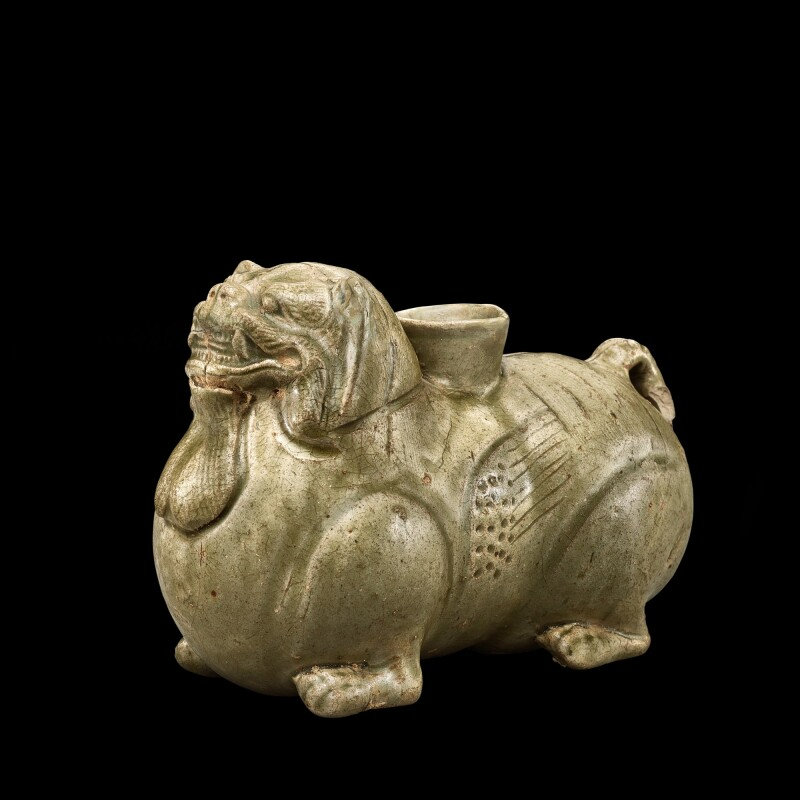




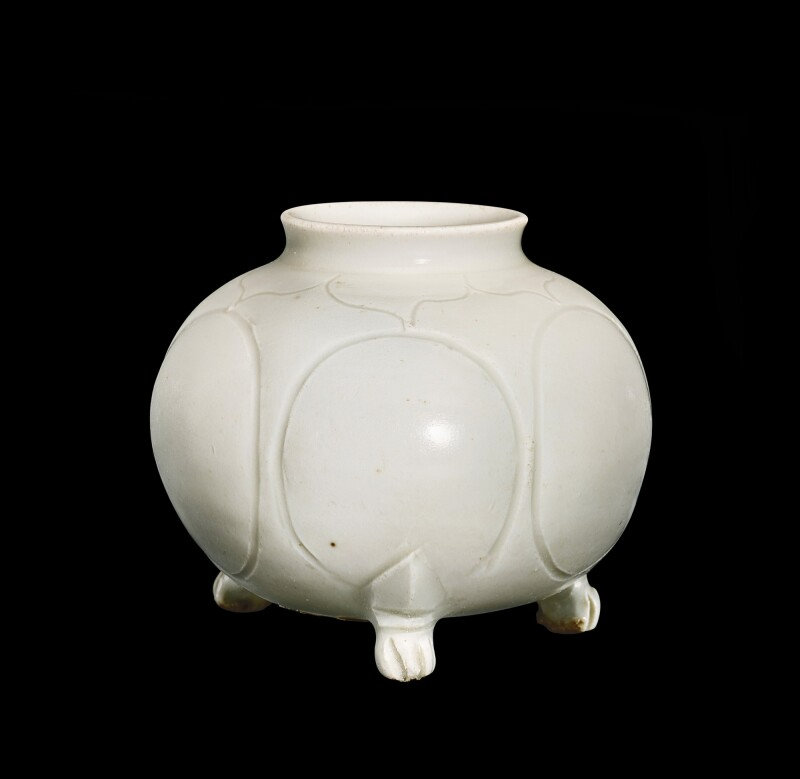


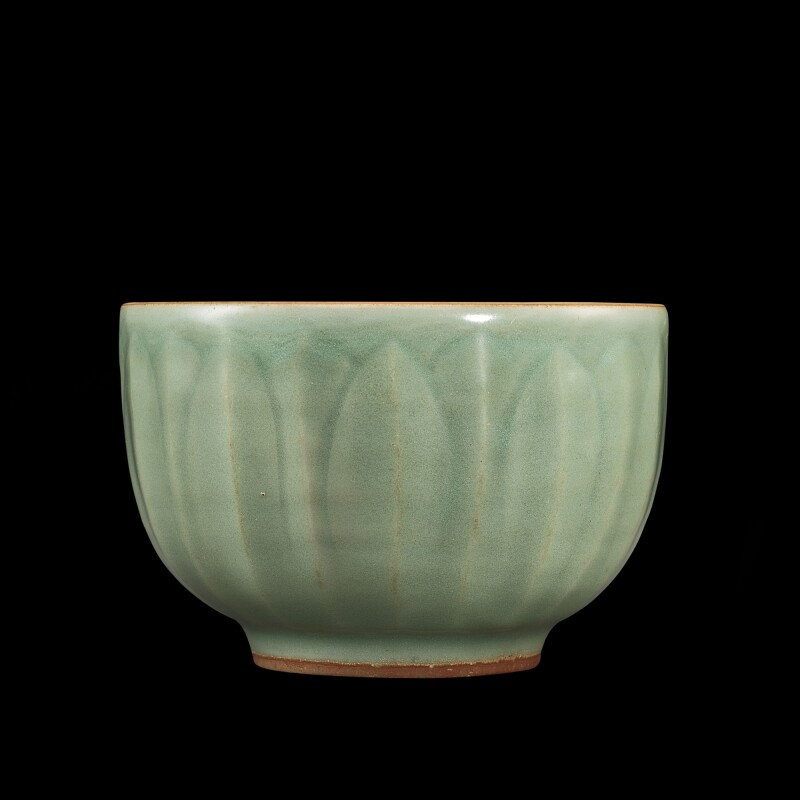

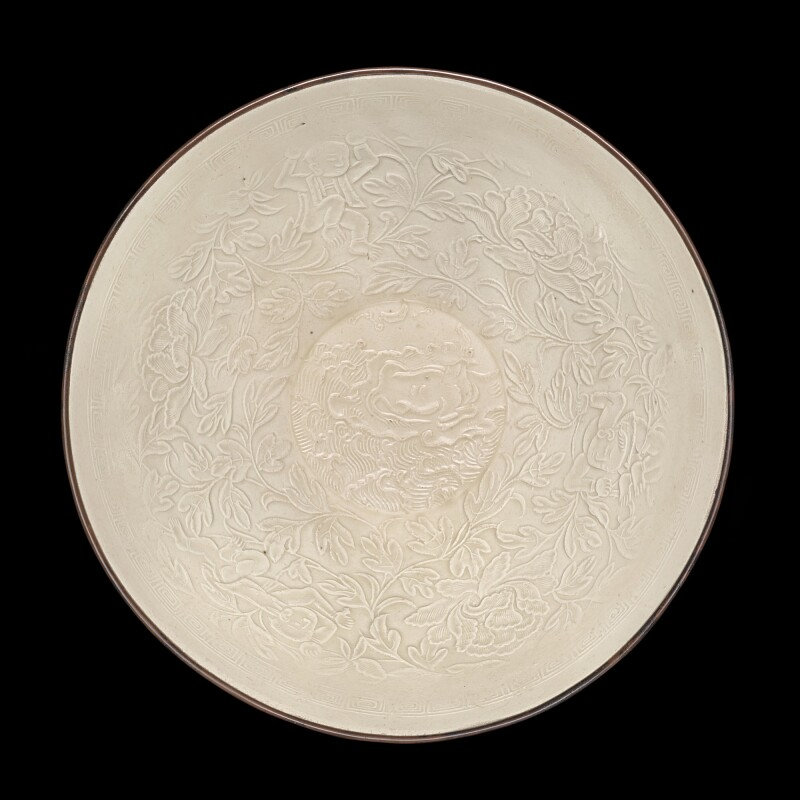






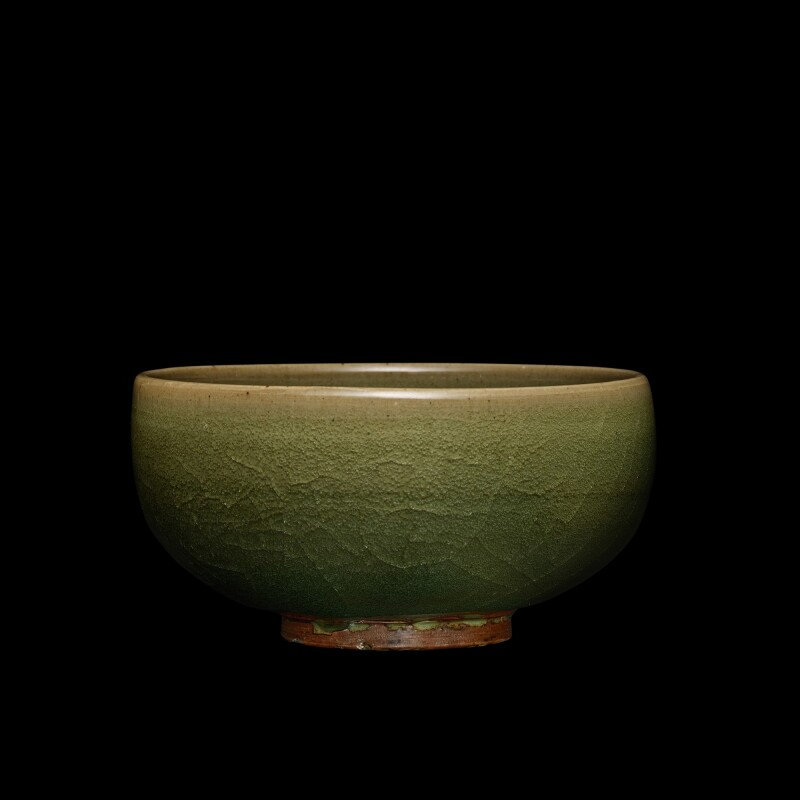
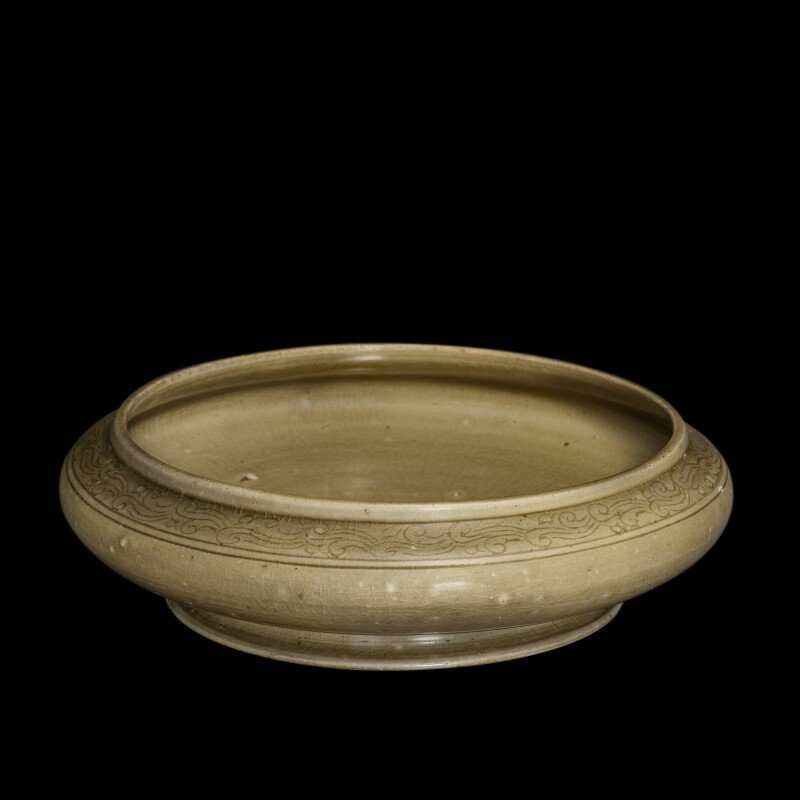
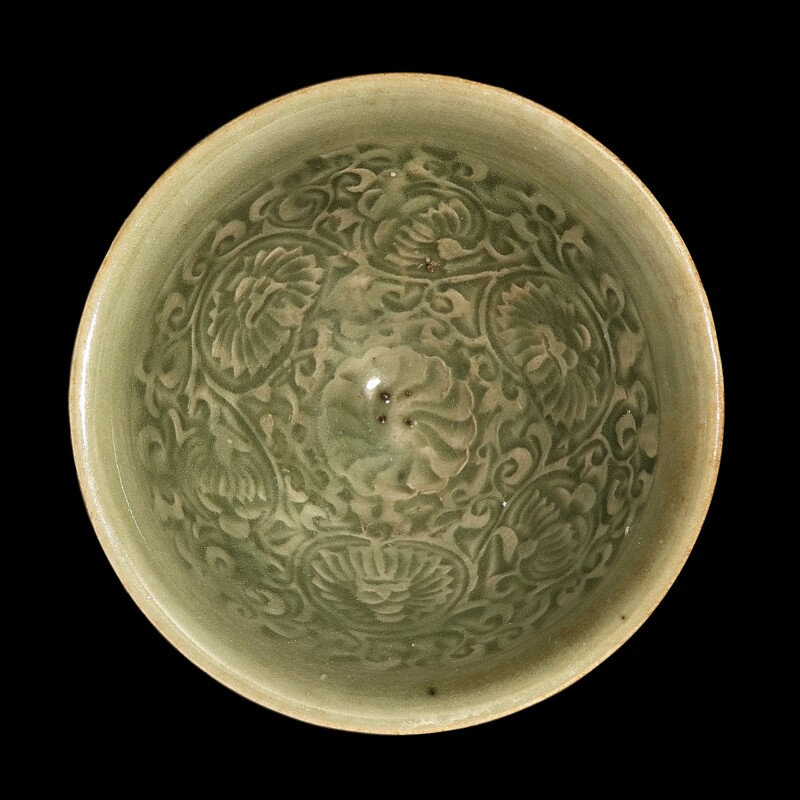

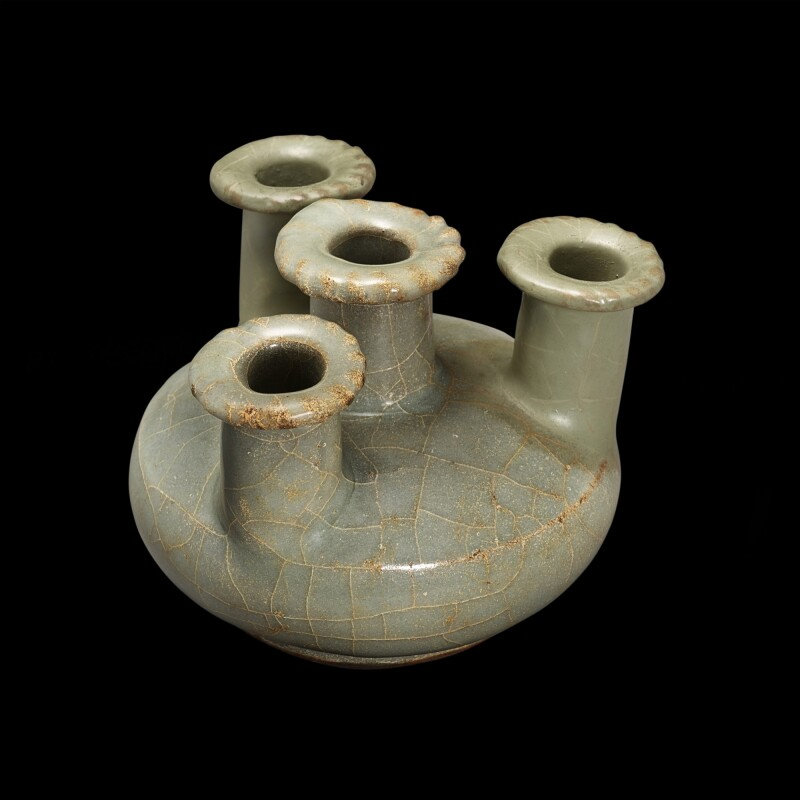


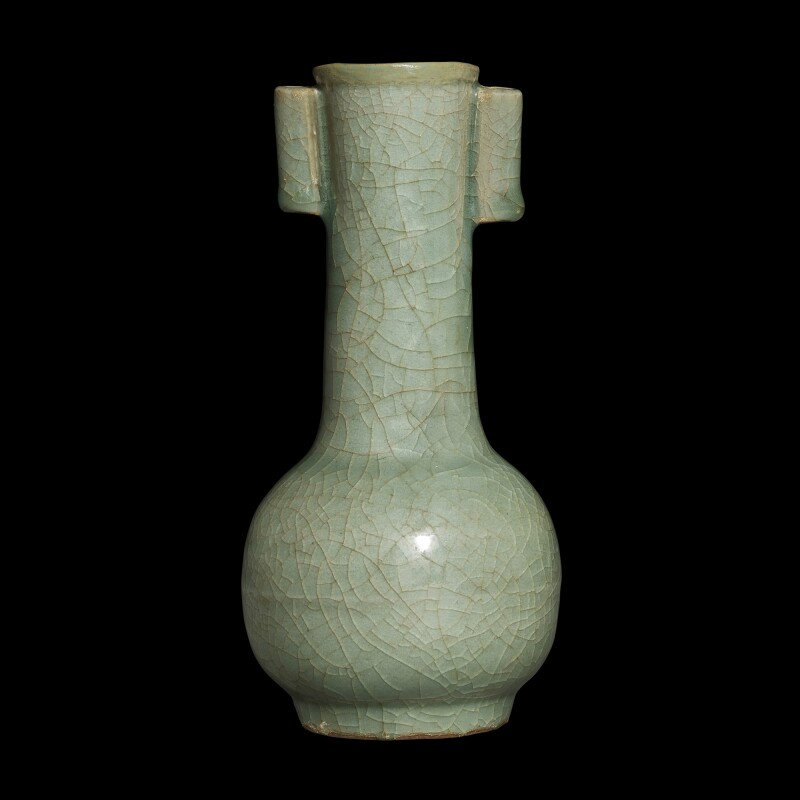

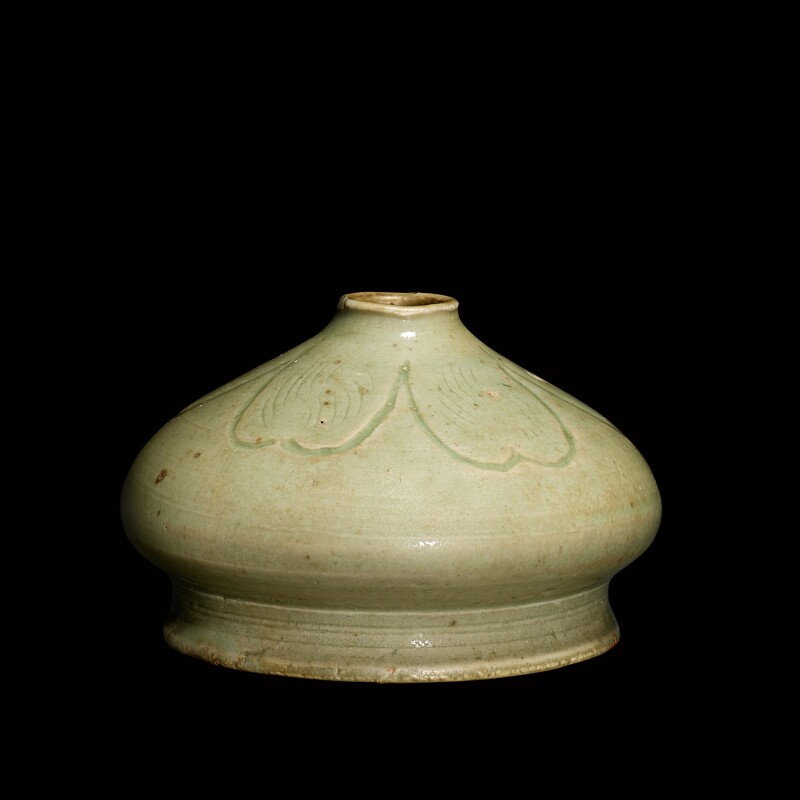


/image%2F1371349%2F20240422%2Fob_9e242e_telechargement-8.jpg)
/image%2F1371349%2F20240422%2Fob_389183_telechargement-2.jpg)
/image%2F1371349%2F20240418%2Fob_ac5c4c_telechargement.jpg)
/image%2F1371349%2F20240418%2Fob_709b64_304-1.jpg)